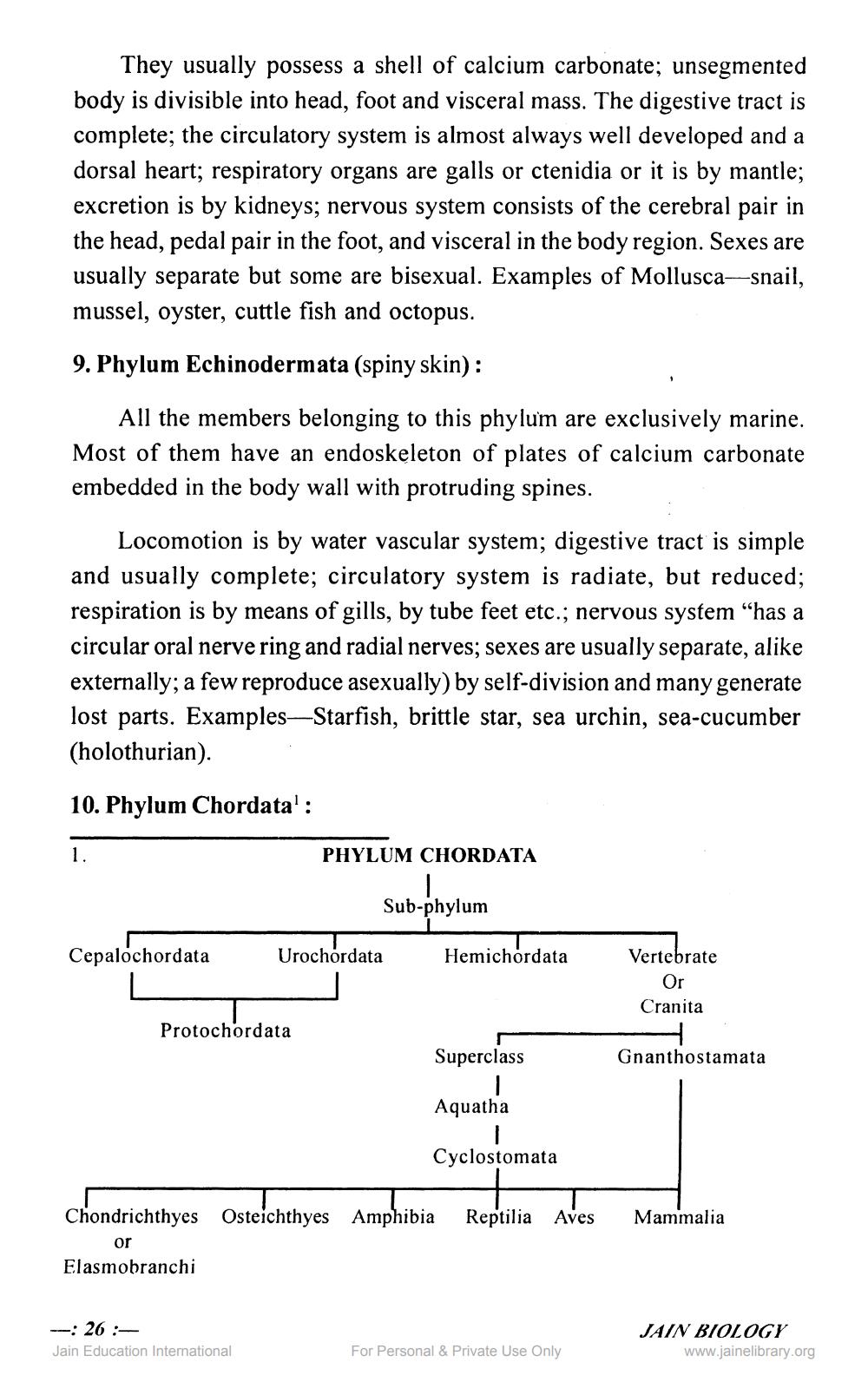________________
They usually possess a shell of calcium carbonate; unsegmented body is divisible into head, foot and visceral mass. The digestive tract is complete; the circulatory system is almost always well developed and a dorsal heart; respiratory organs are galls or ctenidia or it is by mantle; excretion is by kidneys; nervous system consists of the cerebral pair in the head, pedal pair in the foot, and visceral in the body region. Sexes are usually separate but some are bisexual. Examples of Mollusca—snail, mussel, oyster, cuttle fish and octopus.
9. Phylum Echinodermata (spiny skin):
All the members belonging to this phylum are exclusively marine. Most of them have an endoskeleton of plates of calcium carbonate embedded in the body wall with protruding spines.
Locomotion is by water vascular system; digestive tract is simple and usually complete; circulatory system is radiate, but reduced; respiration is by means of gills, by tube feet etc.; nervous system “has a circular oral nerve ring and radial nerves; sexes are usually separate, alike externally; a few reproduce asexually) by self-division and many generate lost parts. Examples—Starfish, brittle star, sea urchin, sea-cucumber (holothurian).
10. Phylum Chordata':
PHYLUM CHORDATA
Sub-phylum
Cepalochordata
Urochordata
Hemichordata
Vertebrate
Or Cranita
Protochordata
Superclass
Gnanthostamata
Aquatha
Cyclostomata
Chondrichthyes Osteichthyes Amphibia
Reptilia
Aves
Mammalia
or
Elasmobranchi
--:26:Jain Education International
JAIN BIOLOGY
www.jainelibrary.org
For Personal & Private Use Only




